Epidemiology, diagnosis and management of hirsutism: a consensus statement by the Androgen Excess and Polycystic Ovary Syndrome Society
November 2011
in “Human reproduction update”
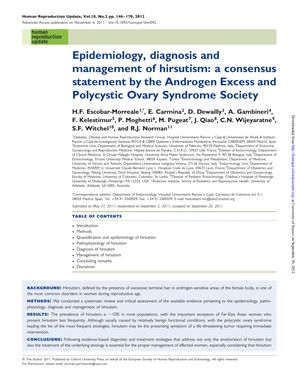
TLDR Experts recommend using evidence-based methods to diagnose and treat hirsutism, focusing on symptoms and underlying causes.
The document reviewed the epidemiology, pathophysiology, diagnosis, and management of hirsutism, a condition characterized by excessive terminal hair growth in women. The prevalence of hirsutism is approximately 10% across most populations, with a notably lower incidence in Far-East Asian women. Polycystic ovary syndrome (PCOS) is the most common cause, but hirsutism can also indicate serious conditions, such as life-threatening tumors. The paper emphasizes the importance of evidence-based diagnostic and treatment approaches that focus on both improving the symptoms of hirsutism and addressing its underlying causes. Given that hirsutism typically requires long-term management, the document provides guidelines for the etiological diagnosis and management of this common condition.
View this study on academic.oup.com →
Cited in this study
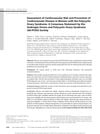
research Assessment of Cardiovascular Risk and Prevention of Cardiovascular Disease in Women with the Polycystic Ovary Syndrome: A Consensus Statement by the Androgen Excess and Polycystic Ovary Syndrome (AE-PCOS) Society
Women with PCOS should be screened for heart disease risk and manage their health to prevent it.
research Best Practice Options for Hair Removal in Patients with Unwanted Facial Hair Using Combination Therapy with Laser: Guidelines Drawn up by an Expert Working Group
research Visually scoring hirsutism
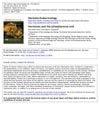
research Hormones and the pilosebaceous unit
Hormones significantly affect hair and oil gland function in the skin, and more research is needed on skin-related hormone disorders.

research The Hair Follicle as a Dynamic Miniorgan
Hair follicles are complex, dynamic mini-organs that help us understand cell growth, death, migration, and differentiation, as well as tissue regeneration and tumor biology.

research The Androgen Excess and PCOS Society criteria for the polycystic ovary syndrome: the complete task force report
The report concludes that PCOS is mainly a condition of excess male hormones and its definition may change as new information is discovered.
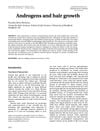
research Androgens and hair growth
Androgens can both increase and decrease hair growth in different parts of the body.
research Antiandrogens for the Treatment of Hirsutism: A Systematic Review and Metaanalyses of Randomized Controlled Trials
Antiandrogens are somewhat effective in reducing excessive hair growth in women.

research A Prospective Study of the Prevalence of Nonclassical Congenital Adrenal Hyperplasia among Women Presenting with Hyperandrogenic Symptoms and Signs
About 2.2% of women with symptoms of high male hormones have a mild form of congenital adrenal hyperplasia, and measuring a specific hormone level can accurately diagnose it.

research Criteria for Defining Polycystic Ovary Syndrome as a Predominantly Hyperandrogenic Syndrome: An Androgen Excess Society Guideline
Polycystic Ovary Syndrome should be seen mainly as a condition of excess male hormones, with a focus on this in its definition.
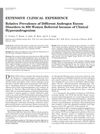
research Relative Prevalence of Different Androgen Excess Disorders in 950 Women Referred because of Clinical Hyperandrogenism
Most women referred for excess male hormone symptoms had polycystic ovary syndrome (PCOS), with other conditions being less common.
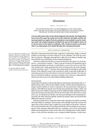
research Hirsutism
The document likely offers guidance on treating a woman's excessive hair growth, considering her symptoms and obesity.
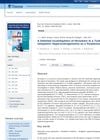
research A Detailed Investigation of Hirsutism in a Turkish Population: Idiopathic Hyperandrogenemia as a Perplexing Issue
The main cause of excessive hair growth in Turkish women is Polycystic ovary syndrome, but in about one fifth of cases, the reason for high male hormone levels is unknown.

research Finasteride versus cyproterone acetate-estrogen regimens in the treatment of hirsutism
Finasteride and CPA-EE2 equally reduce hirsutism, but affect hormone levels differently.

research Intermittent low-dose finasteride is as effective as daily administration for the treatment of hirsute women
Intermittent low-dose finasteride works as well as daily use for treating excessive hair growth in women.

research A comparison between spironolactone and spironolactone plus finasteride in the treatment of hirsutism
Spironolactone plus finasteride reduces hirsutism more effectively.
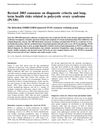
research Revised 2003 consensus on diagnostic criteria and long-term health risks related to polycystic ovary syndrome (PCOS)
The 2003 consensus updated PCOS diagnosis criteria and linked PCOS to higher risks of diabetes and heart problems, recommending lifestyle changes to lower these risks.
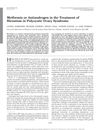
research Metformin or Antiandrogen in the Treatment of Hirsutism in Polycystic Ovary Syndrome
Metformin is effective for treating excessive hair growth in women with PCOS and may work better than the standard treatment in some ways.

research The benefits of finasteride for hirsute women with polycystic ovary syndrome or idiopathic hirsutism
Finasteride effectively reduces hair growth in women with polycystic ovary syndrome or idiopathic hirsutism.

research Comparison of spironolactone and spironolactone plus finasteride in the treatment of hirsutism
Spironolactone plus finasteride works better for treating hirsutism.

research Comparison of high-dose finasteride (5 mg/day) versus low-dose finasteride (2.5 mg/day) in the treatment of hirsutism
Low-dose finasteride effectively treats hirsutism, is safe, and cost-effective.
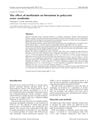
research The effect of metformin on hirsutism in polycystic ovary syndrome
Metformin improves hair growth and menstrual frequency in women with PCOS and hirsutism.
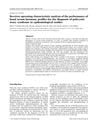
research Receiver operating characteristic analysis of the performance of basal serum hormone profiles for the diagnosis of polycystic ovary syndrome in epidemiological studies
Low SHBG and high FAI, FT, and DHEAS levels are effective in identifying PCOS.

research Comparison of Diane 35 and Diane 35 plus finasteride in the treatment of hirsutism
Diane 35 plus finasteride is more effective for treating hirsutism.
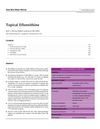
research Topical Eflornithine
Eflornithine cream effectively reduces women's unwanted facial hair but hair returns if treatment stops.

research A prospective, randomized trial comparing flutamide (250 mg/d) and finasteride (5 mg/d) in the treatment of hirsutism
Flutamide reduces hair growth better but has more side effects.

research Comparison of Diane 35 and Diane 35 plus finasteride in the treatment of hirsutism
Diane 35 plus finasteride is more effective in reducing hair growth and androgen levels, but may decrease libido.
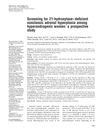
research Screening for 21-hydroxylase–deficient nonclassic adrenal hyperplasia among hyperandrogenic women: a prospective study
Testing basal 17-HP levels is a good way to screen for nonclassic adrenal hyperplasia in women with high androgen levels.

research Comparison of finasteride versus flutamide in the treatment of hirsutism
Finasteride is a safe, effective treatment for hirsutism with fewer side effects.

research A Prospective Randomized Trial Comparing Low Dose Flutamide, Finasteride, Ketoconazole, and Cyproterone Acetate-Estrogen Regimens in the Treatment of Hirsutism
Cyproterone acetate-estrogen most effective for hirsutism, but consider side effects and patient needs.
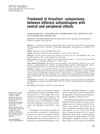
research Treatment of hirsutism: comparisons between different antiandrogens with central and peripheral effects
Finasteride, CPA, and flutamide are all equally effective in reducing excessive hair growth in women.
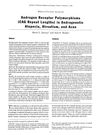
research Androgen Receptor Polymorphisms (CAG Repeat Lengths) in Androgenetic Alopecia, Hirsutism, and Acne
Shorter CAG repeats may cause hair and skin issues, while longer ones may link to acne.

research Comparison of cyproterone acetate plus ethinyl estradiol and finasteride in the treatment of hirsutism
Cyproterone acetate plus ethinyl estradiol is generally more effective in treating hirsutism, but consider side effects and patient characteristics.
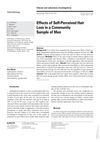
research Effects of Self-Perceived Hair Loss in a Community Sample of Men
Men who think they are losing hair feel worse about themselves, especially if they are younger.

research Comparison of finasteride versus spironolactone in the treatment of idiopathic hirsutism
Finasteride reduces hair growth better, but spironolactone has more side effects.

research Treatment of hirsutism by finasteride and flutamide in women with polycystic ovary syndrome
Finasteride and flutamide effectively reduce hirsutism in PCOS women, with flutamide also lowering hormone levels.
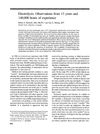
research Electrolysis: Observations from 13 years and 140,000 hours of experience
Electrolysis is effective for permanent hair removal, but technique is key to avoid scarring, and sometimes hormonal treatment is needed for women with hirsutism.

research Clinical and endocrine effects of finasteride, a 5α-reductase inhibitor, in women with idiopathic hirsutism
Finasteride reduces hairiness and androgen levels in women with unexplained excessive hair growth.
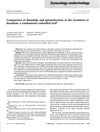
research Comparison of flutamide and spironolactone in the treatment of hirsutism: a randomized controlled trial
Flutamide is more effective and has fewer side effects than spironolactone for treating hirsutism.
research Cyproterone acetate for severe hirsutism:results of a double‐blind dose‐ranging study*
Cyproterone acetate at 2mg daily is as effective as higher doses for treating excessive hair growth in women.
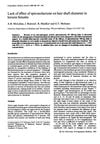
research Lack of effect of spironolactone on hair shaft diameter in hirsute females
Spironolactone did not make hair thinner in women with excess hair growth.
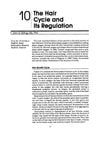
research The hair cycle and its regulation
Hormones, nutrition, and seasonal changes regulate hair growth cycles, with androgens extending growth phases and factors like aging and malnutrition affecting hair loss and thinning.
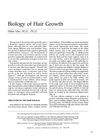
research Biology of Hair Growth
Testosterone and dihydrotestosterone affect hair growth, and new techniques like the folliculogram help study it, but fully understanding hair growth is still complex.
research EFFECTS OF A LOW‐DOSE DESOGESTREL‐ETHINYLESTRADIOL COMBINATION ON HIRSUTISM, ANDROGENS AND SEX HORMONE BINDING GLOBULIN IN WOMEN WITH A POLYCYSTIC OVARY SYNDROME
Low-dose oral contraceptives reduced hair growth and testosterone levels in women with polycystic ovary syndrome.
research THE TREATMENT OF HIRSUTISM WITH A COMBINATION OF DESOGESTREL AND ETHINYL OESTRADIOL
A combination of desogestrel and ethinyl oestradiol effectively reduces hair growth in hirsute women.
Related
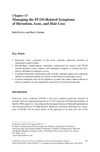
research Managing the PCOS-Related Symptoms of Hirsutism, Acne, and Hair Loss
Birth control pills and anti-androgen medications help manage hair growth, acne, and hair loss in women with PCOS.
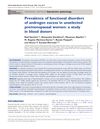
research Prevalence of functional disorders of androgen excess in unselected premenopausal women: a study in blood donors
Many young women who donate blood have hormonal disorders like excess male hormones and PCOS.
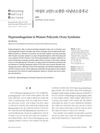
research Hyperandrogenism in Women: Polycystic Ovary Syndrome
The document concludes that more research is needed to create suitable diagnostic criteria and understand PCOS in Korean women, and genetics may allow for personalized treatment.

research Polycystic ovary syndrome and acne.
Women with PCOS often have acne because of high androgen levels, and the article reviewed how to treat this type of acne.